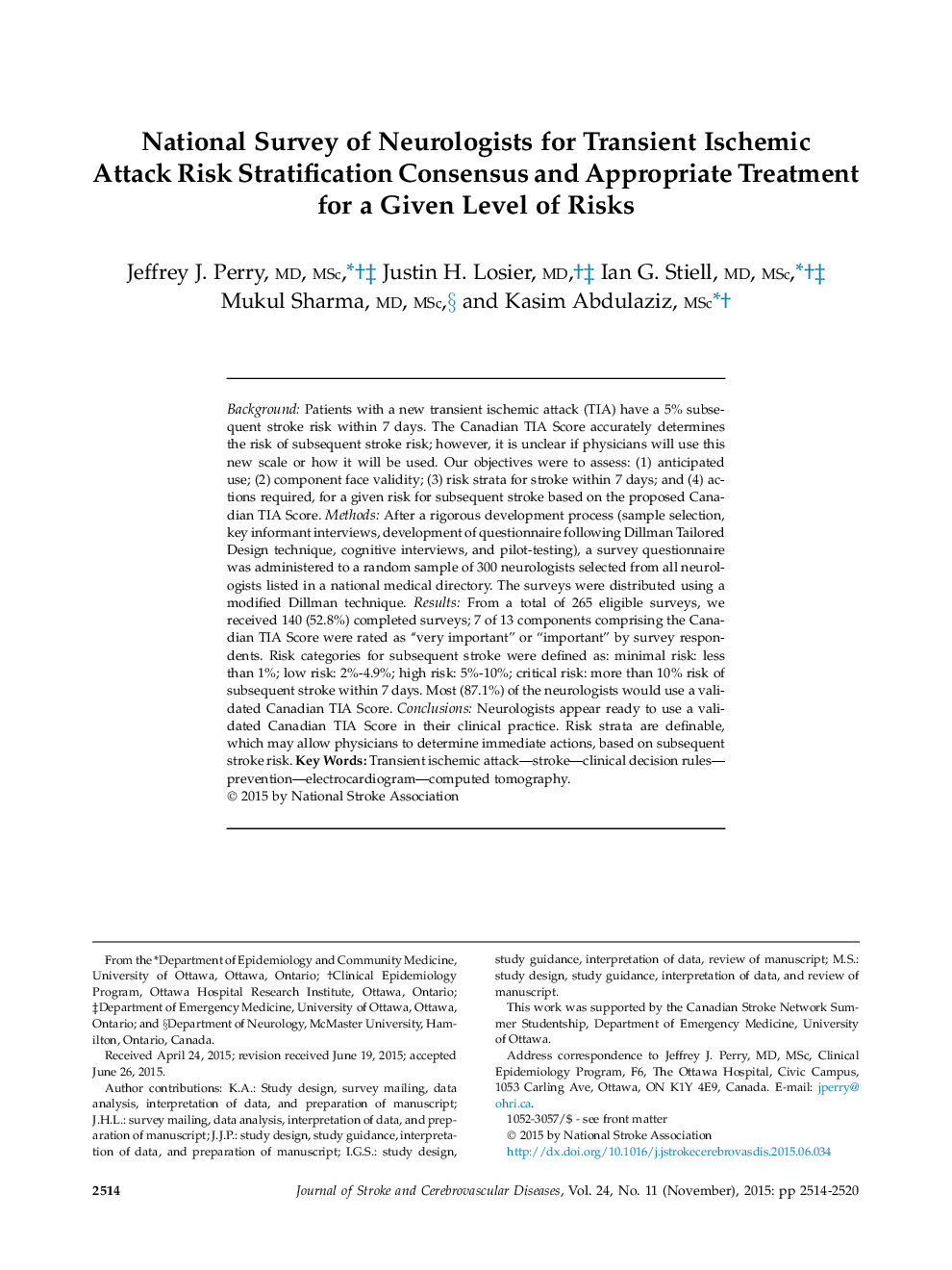| Article ID | Journal | Published Year | Pages | File Type |
|---|---|---|---|---|
| 2702420 | Journal of Stroke and Cerebrovascular Diseases | 2015 | 7 Pages |
BackgroundPatients with a new transient ischemic attack (TIA) have a 5% subsequent stroke risk within 7 days. The Canadian TIA Score accurately determines the risk of subsequent stroke risk; however, it is unclear if physicians will use this new scale or how it will be used. Our objectives were to assess: (1) anticipated use; (2) component face validity; (3) risk strata for stroke within 7 days; and (4) actions required, for a given risk for subsequent stroke based on the proposed Canadian TIA Score.MethodsAfter a rigorous development process (sample selection, key informant interviews, development of questionnaire following Dillman Tailored Design technique, cognitive interviews, and pilot-testing), a survey questionnaire was administered to a random sample of 300 neurologists selected from all neurologists listed in a national medical directory. The surveys were distributed using a modified Dillman technique.ResultsFrom a total of 265 eligible surveys, we received 140 (52.8%) completed surveys; 7 of 13 components comprising the Canadian TIA Score were rated as “very important” or “important” by survey respondents. Risk categories for subsequent stroke were defined as: minimal risk: less than 1%; low risk: 2%-4.9%; high risk: 5%-10%; critical risk: more than 10% risk of subsequent stroke within 7 days. Most (87.1%) of the neurologists would use a validated Canadian TIA Score.ConclusionsNeurologists appear ready to use a validated Canadian TIA Score in their clinical practice. Risk strata are definable, which may allow physicians to determine immediate actions, based on subsequent stroke risk.
